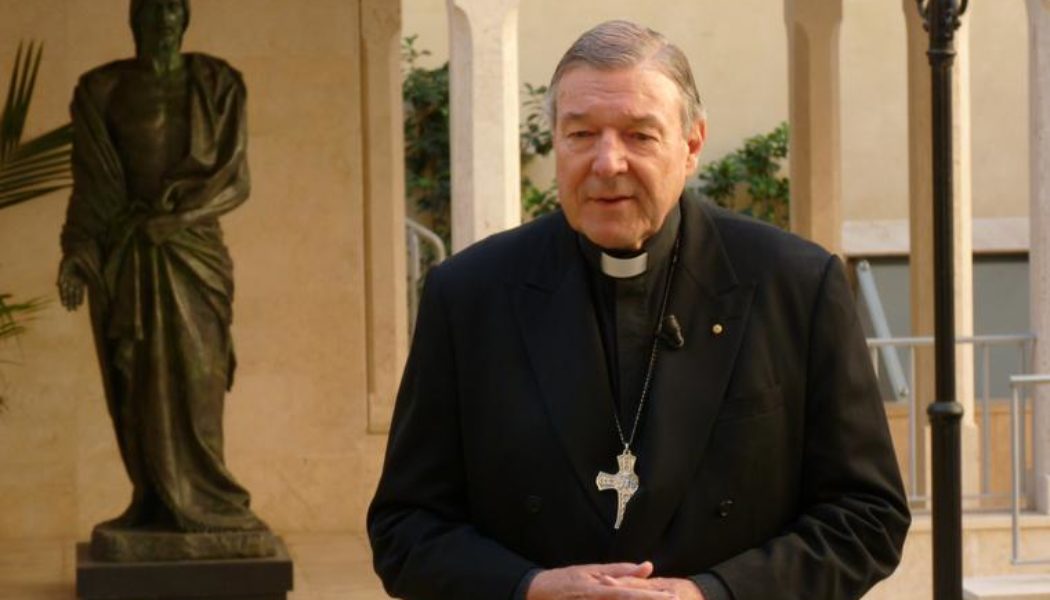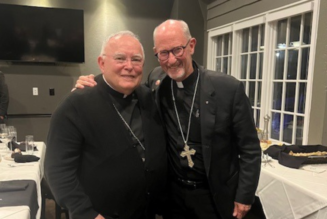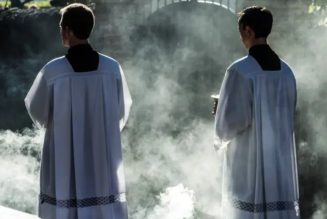
COMMENTARY: Cardinal Pell modeled the classical Ignatian spirituality that was trained to ‘give and not count the cost,’ ‘to fight and not heed the wounds.’
Cardinal George Pell was no doubt the most internationally high-profile Australian cleric in the country’s history.
Within Australia, he was despised and even hated by the kinds of cultural Marxists who are dominant in the media and other switch points of cultural influence. He was hated because he was the most outspoken champion of orthodox Catholicism. Conversely, he was loved and revered by faithful Catholics, especially by Catholics of the younger post-conciliar generations, precisely because he was such a strong defender of the faith.
Sadly, many upwardly socially mobile Catholics of his own generation feared that his confrontations with the left-liberal establishment would have an adverse impact on their opportunities for professional preferment, and thus they did not support him. As Catholics, they wanted to blend in with the establishment, not wage a culture war against it. In the idiom of the venerable Fulton Sheen, they wanted Christ without the cross. However, such liberal Catholicism has a short shelf life. It usually expires after one generation.
Cardinal Pell came to national prominence in the middle period of the pontificate of St. John Paul II, at the time when documents like the Catechism of the Catholic Church, Veritatis Splendor and Ordinatio Sacerdotalis were destroying the hopes of liberal theologians for a change in Church teaching on contraception and the ordination of women and a raft of other liberal agenda items. While many clerics kept their heads down and ignored the documents, a young Bishop Pell actively promoted them, often with the help of university students, for whom he became a mentor.
His personality was that of an alpha male whose alternative career could have been in the fields of football and politics. In his youth, he was offered a position to play A-grade football but turned it down to enter the seminary. Like the influential 20th-century archbishop of Melbourne, Archbishop Daniel Mannix (1864-1963), whom he admired, he believed that Catholic bishops should play a role in the public life of their nations.
Also like Archbishop Mannix, he relied heavily on the laity to promote his ideas. His leadership style was that of a fusion of the old European prince-bishops who were public dignitaries with that of the Irish-American entrepreneur bishops who went about buying property and building schools, universities and hospitals. The institutions he built include: the Australian Catholic University, the Sydney campus of the University of Notre Dame and Domus Australia in Rome. He also secured World Youth Day for Sydney in 2008.
In addition to being a public figure and an entrepreneur, Cardinal Pell was also intellectually inclined. He held a doctorate in Church history from Oxford and gave occasional lectures all over the world on topics of contemporary ecclesial interest. He thought a lot about the problem of secularism, but he wasn’t very keen on the idea of a “Benedict Option” as a Catholic response to the increasing repaganization of Western culture. He was worried that this would lead to a retreat of Catholics from public life, and he wanted Catholics to be in the very center. He chose as his episcopal motto “Be Not Afraid,” and his message was “Don’t retreat; keep fighting!”
Though he may not have had a lot in common with the theological trajectory of modern Jesuits, and especially not modern Jesuits infused with liberation theology or theology as politics, he was a model of the classical Ignatian spirituality that was trained to “give and not count the cost,” “to fight and not heed the wounds.” He wasn’t into introspective “wound licking.” He knew he was born into a cosmic battle, and he was prepared to fight like the heroic cardinals caught on the wrong side of the Berlin Wall during the Cold War.
While he was the kind of man who regularly dined with world leaders, he never forgot his more lowly friends. In the idiom of J.R.R. Tolkien he, like Gandalf, understood the value of Hobbits and loved them. When he was unjustly imprisoned for 405 days, it was mostly his devoted friends who organized prayer vigils for their leader. He may have ended up a prince-bishop, but he began his life as the son of a publican, and he never lost the common touch of a boy who learned to make conversation with everyone and anyone who came in from the street in search of a beer.
There was nonetheless a difference between the public and private Pell. In public, he kept a very stiff upper lip. The football fullback part of his personality assumed dominance. The leader of the Catholic team, so to speak, should not appear weak in public. Even when he was cross-examined for literally hours on end during the Royal Commission on child abuse, he showed no emotion. In private, however, the Oxford historian part of his personality tended to dominate. He was warm, fun, a master of repartee, interested in exchanging ideas in a playful way. He showed affection by teasing people. Once a person became his friend, he remembered them for life. Even after he rose to international prominence, if someone he had known in his early days crossed his path at a big Catholic event, he would greet them as a mate.
He was very close to his sister Margaret and perhaps because of this significant relationship, he had no trouble relating to women. Catholic women who had heard that he was completely hostile to the idea of the ordination of women were often pleasantly surprised in their one-on-one encounters with him. He had no problem with the concept of women in professional and other leadership positions. He simply thought that they could no more play the part of Christ in the Mass than a small boy can play the part of Our Lady in a Nativity play. Gender fluidity was not for him.
His death achieved the effect of getting Prince Harry off the front pages of the world’s leading newspapers. The contrast between these two men could not be more stark. There is no Ignatian-style self-sacrificial service for Harry. He has become a professional wound licker. He wants to record every injury, real or imagined, tally up every grievance, and package them to the world as a money-making soap opera. In contrast, Cardinal Pell was no self-pitying wound licker. He was, and will be in eternity, a real Christian prince.
Tracey Rowland holds the St. John Paul II Chair of Theology at the University of Notre Dame (Australia) and is a recipient of the Ratzinger Award for theology (2020). She is the author of the forthcoming book Handing on the Memoria Ecclesiae: Five Decades of Communio Scholarship, to be published by Word on Fire in 2023.








